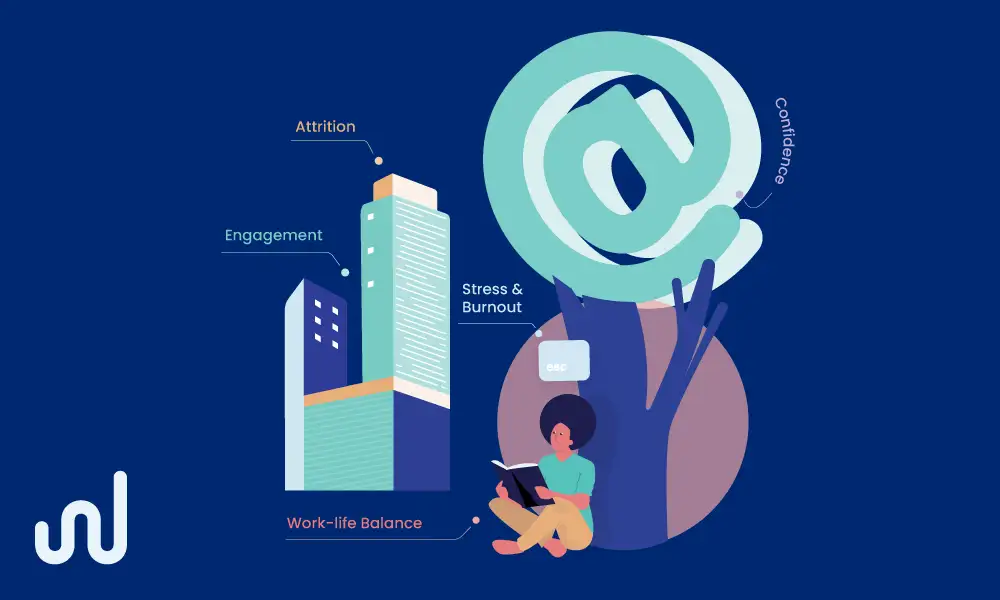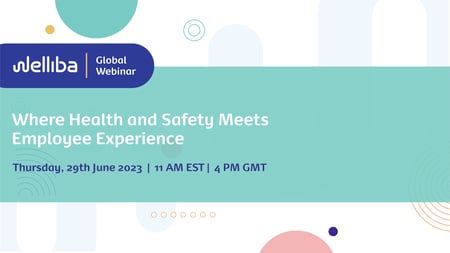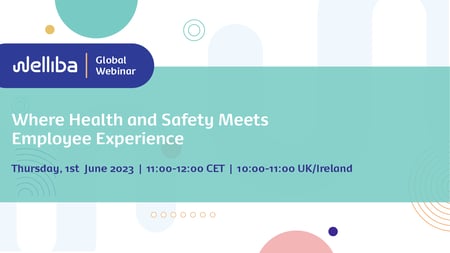A holistic approach to change the EX landscape
Blog Series 1/3 | Time to break away from ‘employee engagement' and focus on ‘employee experience’
Go back to Intro - Continue reading Part 2 and Part 3
In this series of blog posts, we are exploring how the first employee experience management system (Welliba EX+) offers a new approach to measuring and managing employee experience (EX). Last week, we introduced EX+; this week we will discuss the new and holistic conceptual model of employee experience.
Do you remember from last week how measuring employee engagement evolved into measuring employee experience? This implied a gradual shift to a broader perspective of understanding what makes employees thrive. It may seem odd that organisations were once satisfied with the limited perspective on ‘engagement’. Did it really make sense to adopt an engagement model and block out many of the interacting factors that influence employee performance to be able to build workable engagement measuring tools?
With today’s insights, this may not seem to be the case. But measuring engagement was a big step forward from not measuring anything of the sort. Let us also remember how organisations have become much more complex in the last decades. Look back to 2021, when the Covid-19 outbreak made it impossible for employees to leave their homes. Most organisations successfully introduced remote working in a matter of weeks, but the reverberations of that shock will be felt for many years to come. Hybrid work is becoming the new normal and HR is expected to keep employees engaged, thriving and balanced. But what new approach can help HR to do this successfully?
Now more than ever, we need to understand employee experience within its context. Every company is different and the drivers of good employee experience in one company, may be very different from what works in another company where the context is entirely different. Even within companies, hybrid working has made the idea of one organisational context largely obsolete. Every employee can now work within a unique context. And somehow, HR is expected to keep up…
Welliba’s model enhances traditional approaches and can help HR to manage the new complexity of working in flexible organisations. EX+ is built on the premise that employee experience is the result of the interaction between people’s unique characteristics and their unique environment. Our model includes both the intrinsic drivers of EX (self-insight) and the external contextual boosters and blockers that influence EX.
Self-insight is measured by a combination of 12 dimensions, grouped in three domains: ‘Feeling Good’, ‘Realising Potential’ and “Personal Resources”. As a result, together, they paint a very complete picture of how an employee feels (mood, energy), his/her relationship to their job (purpose, growth) and the resources available to that employee (resilience, relationships). But the model goes beyond ‘self’ and examines the context within which the ‘self’ is placed. The seven context factors include Work, Personal Life, Teams and Culture.

For the sake of argument, think of young talent. These are typically young people at the beginning of a new career, who are still getting to know the organisation they have joined and who are learning to interact with other employees within this new context. Maybe they are hybrid workers themselves, maybe they are working in teams with other hybrid workers. In order to understand the needs of young talent, to provide them with advice on how to thrive and to design people programmes to help them succeed, HR needs to understand how they are doing. Clearly, data that measures the three dimensions of ‘self’ + context factors is more valuable than data that takes a narrow view of that experience (e.g. only focused on ‘feeling good’).
Welliba’s approach starts with a more elaborate contextual model, but there is much more to EX+.
Our next blog will discuss data quality and employee ownership.









